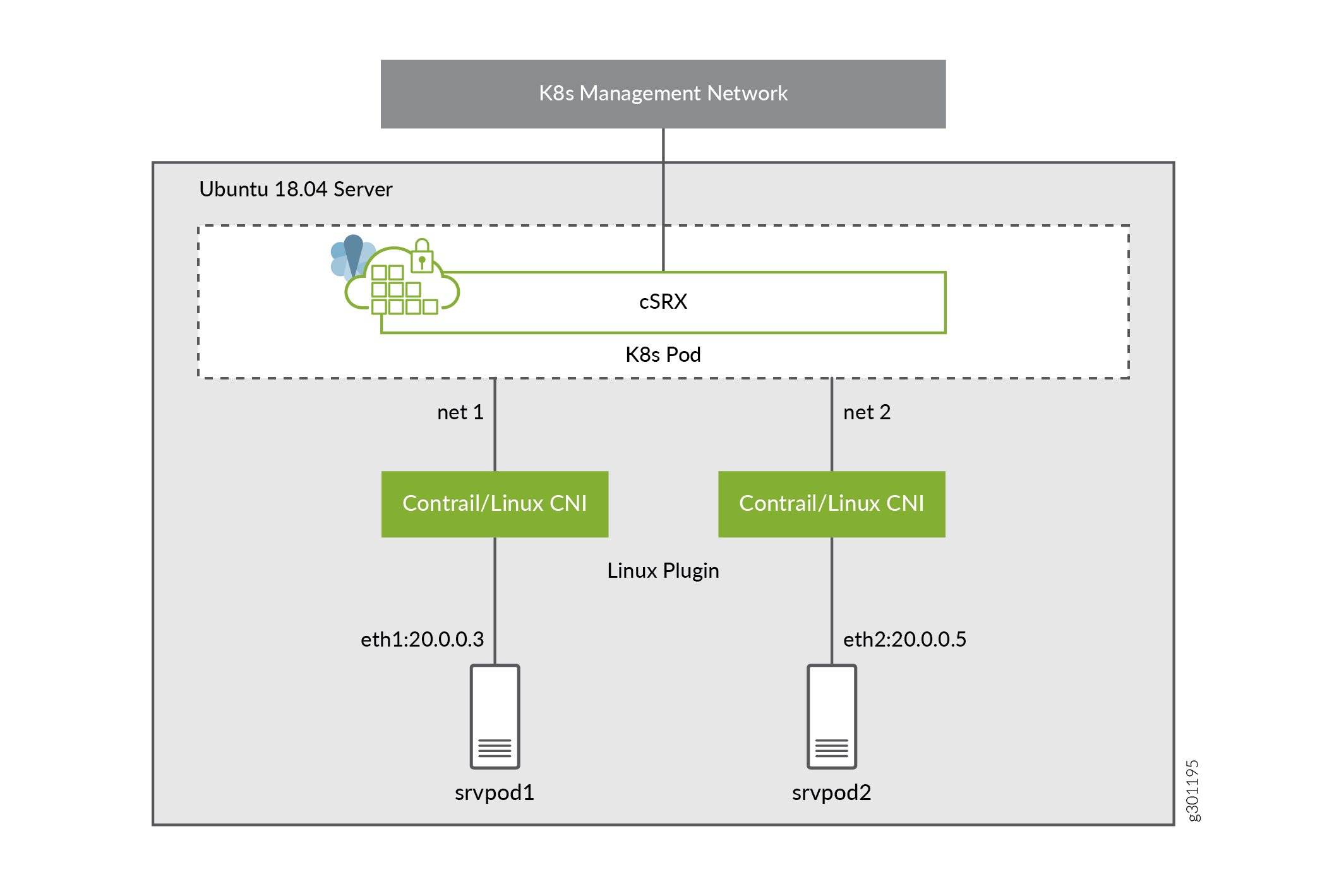cSRX Pods With Internal Network
With bridge plugin, all containers on the same host are plugged into a bridge
(virtual switch) that resides in the host network name space. The containers receive one end
of the veth pair with the other end connected to the bridge. An IP address is only assigned
to one end of the veth pair in the container. The bridge itself can also be assigned an IP
address, turning it into a gateway for the containers. Alternatively, the bridge can
function in L2 mode and must be bridged to the host network interface (if other than
container-to-container communication on the same host is desired). The network configuration
specifies the name of the bridge to be used.
To connect cSRX with external network using bridge:

